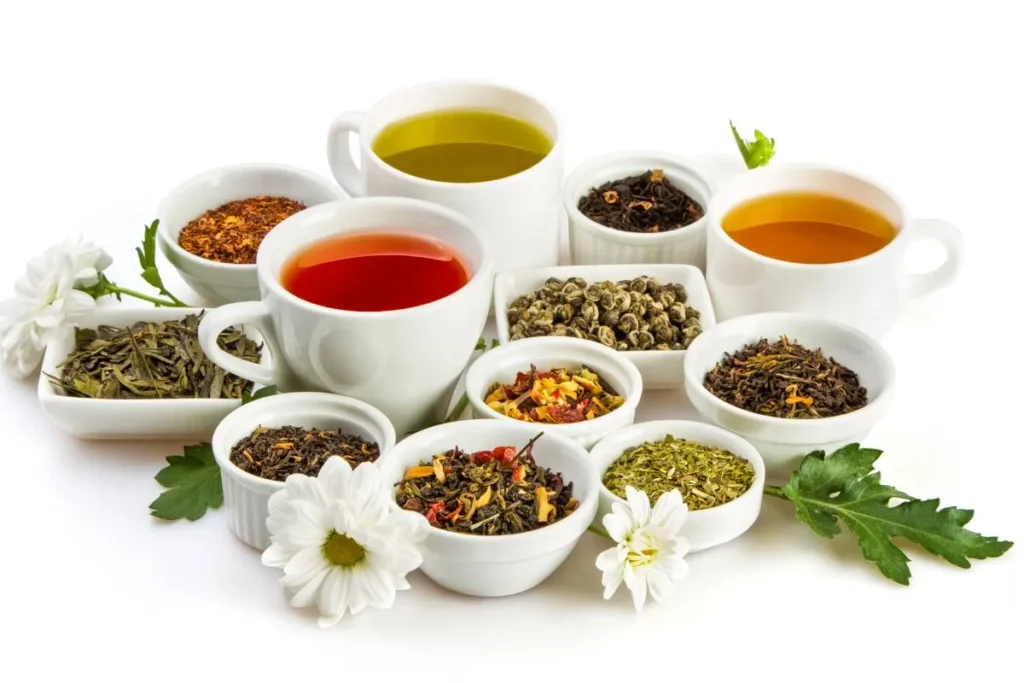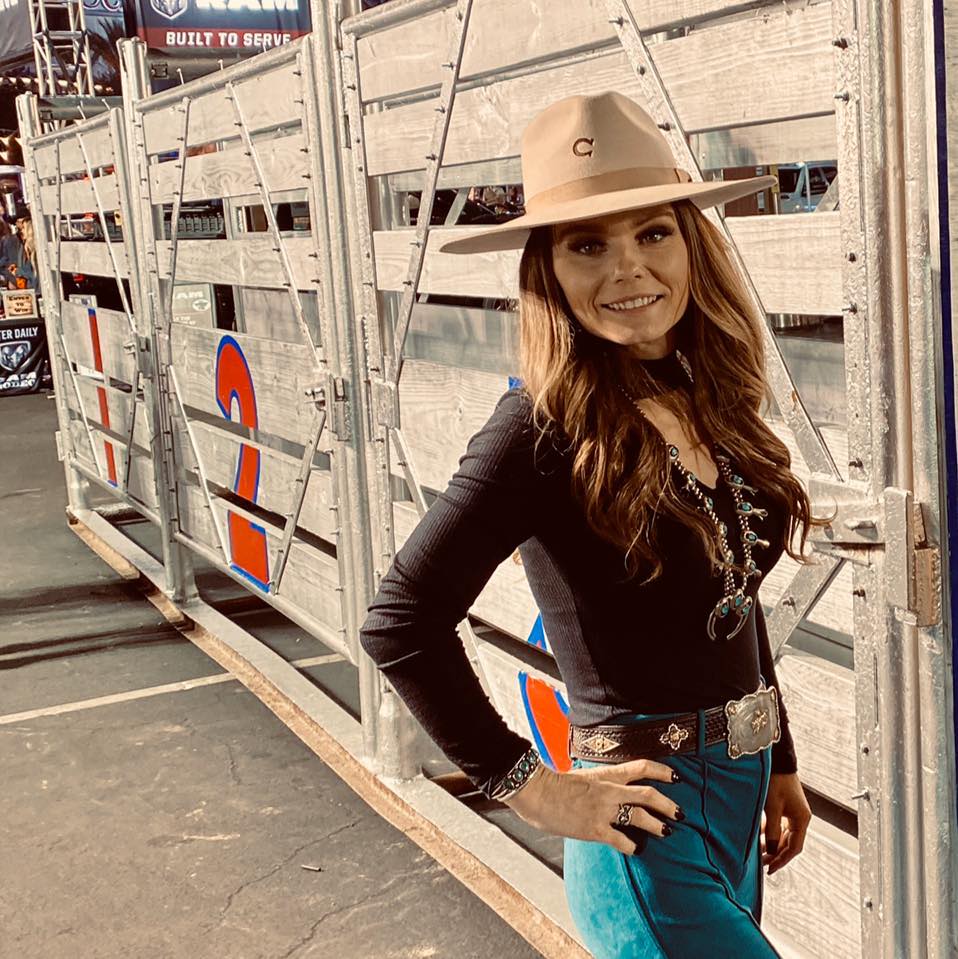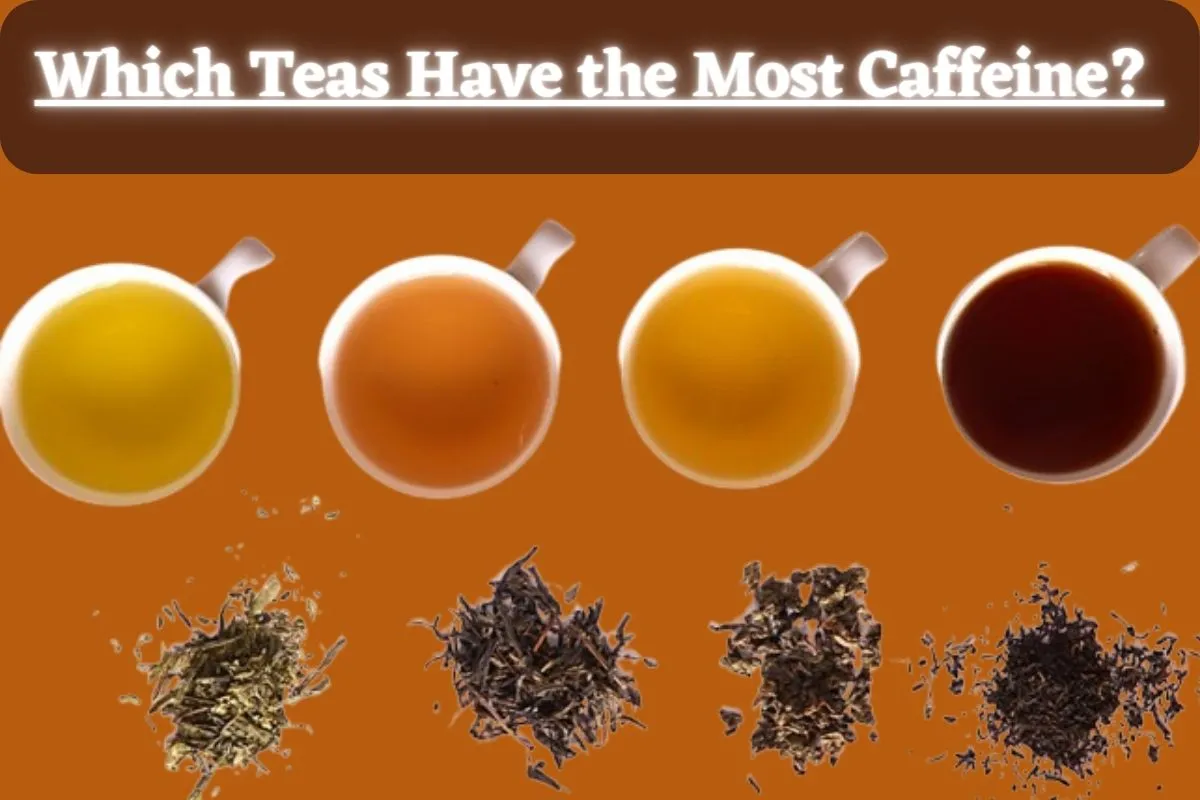Tea, beloved for its soothing properties and diverse flavors, is also a source of caffeine. For many, it’s the morning cup of energy to kickstart the day or the afternoon pick-me-up. But in terms of caffeine levels, not all teas are made equal.
Knowing Which Teas Have the Most Caffeine will enable you to choose the ones that best fit your tastes and way of life.
Which Teas Have the Most Caffeine?
Here are some teas that generally have the highest caffeine content:
Black Tea (40-70 mg per 8-oz cup)
Black tea offers a robust and multifaceted flavor experience. You’ll find malty, full-bodied varieties like Assam, delicate and floral options like Darjeeling, classic and strong blends like English Breakfast, and citrusy Earl Grey infused with bergamot oil. Black teas generally contain the highest caffeine content among true teas due to their full oxidation process. This type of tea originates from the same plant as all true teas (Camellia sinensis) and is enjoyed around the world.
Matcha (30-70 mg per 8-oz cup)
Made from finely ground, shade-grown green tea leaves, matcha delivers a vibrant green hue and a slightly sweet, grassy flavor with potential hints of umami. Its unique preparation, whisked into a frothy beverage, means you consume the entire leaf, providing a concentrated dose of caffeine alongside beneficial antioxidants. Matcha is a cornerstone of Japanese tea culture.
Yerba Mate (30-60 mg per 8-oz cup)
This South American herbal beverage provides a unique earthy and slightly bitter flavor profile. It packs a stimulating punch thanks to its natural caffeine content and other compounds like theobromine and theophylline. Yerba mate is traditionally enjoyed from a gourd with a metal straw called a bombilla, though it can be brewed like loose-leaf tea.
Oolong Tea (30-50 mg per 8-oz cup)
Oolong teas represent incredible diversity, ranging from light, floral varieties like Ti Kuan Yin to darker, roasted types like Da Hong Pao. Their partial oxidation places their flavor and caffeine levels between green and black teas. Oolongs originate primarily from China and Taiwan, and are revered for their complex and nuanced flavor profiles.
Guayusa (20-50 mg per 8-oz cup)
Hailing from the Amazon rainforest, this herbal tea offers a naturally sweet and smooth flavor profile. Guayusa delivers a balanced energy boost thanks to its combination of caffeine and other stimulating compounds, promoting a focused and less jittery feeling than coffee.
Green Tea (25-45 mg per 8-oz cup)
Green teas offer a wide range of flavors, from grassy and vegetal options like Sencha to sweeter, umami-rich types like Gyokuro. They’re minimally processed, preserving natural compounds and generally containing moderate caffeine levels. Green tea is primarily grown throughout Asia, particularly in China and Japan.
White Tea (15-30 mg per 8-oz cup)
Known for their delicate sweetness and downy appearance, white teas consist mainly of young buds and leaves. Their gentle processing results in a subtle flavor and generally lower caffeine content compared to other true teas. White teas are primarily grown in the Fujian province of China.
Pu-erh Tea (30-60 mg per 8-oz cup)
Pu-erh is a unique fermented tea that comes in two main types: raw (sheng) and ripened (shou). Raw pu-erh offers greener, sometimes grassy flavors, while ripened versions are known for their earthy, musty notes. Pu-erh teas hail from the Yunnan province of China and are known for their complexity and evolving flavor profiles over time. Due to the fermentation process, caffeine levels can vary greatly among different pu-erh teas.
Read Also:
👉Does Barley Tea Have Caffeine
Factors Affecting Caffeine Content in Tea
The caffeine content in tea can be influenced by a variety of factors, which can be grouped into several main categories:
Type of Tea Plant:
The species and variety of the tea plant (Camellia sinensis) have inherent genetic differences that affect caffeine content. For example, Camellia sinensis var. assamica typically has higher caffeine levels compared to Camellia sinensis var. sinensis.
Part of the Plant Used:
The parts of the plant used to make tea also influence caffeine content. Buds and young tea leaves generally contain more caffeine than older leaves.
Growing Conditions:
Factors such as altitude, soil, climate, and the amount of sunlight the plant receives can affect the physiological aspects of the tea plant, including its caffeine content. Plants grown in more stressful conditions, like higher altitudes and brighter sunlight, often produce more caffeine as a natural insect repellent.
Processing Methods:
The way tea leaves are processed after harvesting can significantly impact caffeine levels. For example, black teas undergo full oxidation, which can affect the caffeine content differently compared to green teas, which are not oxidized.
Steeping Time and Temperature:
The duration and temperature at which the tea is steeped can also greatly influence how much caffeine is extracted from the leaves into the final brew. Longer steeping times and higher water temperatures generally increase the caffeine content in the cup.
Tea Leaf Cut or Form:
The cut or form of the tea leaves can affect how quickly caffeine is released during brewing. Finely cut leaves, such as those used in tea bags, often release caffeine more quickly than whole or loose-leaf teas.
Harvest Time:
The season and time of year when the tea leaves are harvested can also impact their caffeine content. Generally, tea harvested in early spring (first flush teas) tends to have higher caffeine levels compared to leaves picked later in the year. This is because the first young leaves and buds of the season concentrate nutrients, including caffeine, as the plant emerges from its dormant winter state.
Amount of tea leaves used:
The amount of tea leaves used can also impact the caffeine content in tea. Using more tea leaves or a larger tea bag can result in a higher caffeine content in the final cup of tea.
Grade of tea leaves:
The grade of tea leaves used can also affect the caffeine content. Higher-grade tea leaves, which are typically larger and more intact, may contain higher caffeine levels than lower-grade tea leaves, which are typically broken or crushed.
Tea Bags vs. Loose Tea:
Tea bags typically contain smaller or broken pieces of leaves, which increase the surface area exposed to water. This allows the water to extract caffeine more quickly and efficiently compared to larger, whole loose tea leaves. Because of the increased surface area, the infusion rate of tea from tea bags is generally faster, leading to a stronger brew with higher caffeine content in a shorter period of time. This is why tea brewed from bags can often taste stronger and have more caffeine than tea brewed from equivalent amounts of loose leaf.
Alternatives to Teas and their Caffeine Content

Here are some alternatives to tea:
Chicory Coffee:
Chicory coffee provides a satisfying alternative to caffeinated coffee for those looking to cut back. It has a bold, roasted flavor with nutty and earthy notes. While it can be slightly bitter, adding sweetener or milk can mellow the taste. Chicory root is a good source of inulin, a prebiotic fiber beneficial for gut health and blood sugar regulation.
Rooibos Tea:
Rooibos, a South African herbal tea, is naturally caffeine-free and boasts a mellow, sweet flavor with hints of vanilla and honey. Known for its rich antioxidant content, rooibos is enjoyed for its potential health benefits and can be savored plain or enhanced with other herbs and spices.
Golden Milk (Turmeric Latte):
This comforting, caffeine-free beverage has its roots in Ayurvedic medicine. Golden milk features the warming spices of turmeric, ginger, cinnamon, and a touch of black pepper, creating a delightful, slightly sweet flavor profile. The key ingredient, turmeric, contains curcumin, which offers numerous potential health benefits, including anti-inflammatory properties.
Herbal Teas:
The world of herbal teas offers a vast array of caffeine-free options to suit every taste and need. Chamomile is known for its gentle, floral flavor and calming effects that can aid sleep. Peppermint delivers a refreshing and invigorating taste and may soothe digestive issues. Ginger brings warmth and spice while potentially supporting digestion and offering anti-inflammatory benefits. Fruity herbal blends combine flavors like hibiscus, berries, citrus, and mint, providing sweet and tangy flavor options.
Dandelion Tea:
Dandelion tea is made from roasted dandelion roots and is caffeine-free. Its flavor is earthy with a subtle bitterness and a slightly sweet finish. This tea is often associated with diuretic properties and may support liver and digestive health.
Lemon Balm Tea:
Lemon balm, a member of the mint family, offers a fresh, citrusy, caffeine-free tea with a hint of mint. It’s traditionally known for its calming and mood-boosting effects, potentially supporting relaxation and better sleep.
Grain-Based “Coffee”:
Made from roasted grains like barley or rye, this caffeine-free alternative offers a roasted and slightly malty flavor profile that resembles coffee without the bitterness. It’s a satisfying option for those looking for the coffee experience without the caffeine.
Cacao Tea:
Cacao tea, made from the husks of cacao beans, provides a rich chocolatey flavor experience that’s less sweet than hot cocoa. While it contains very small amounts of caffeine and theobromine (a similar stimulant), it’s generally considered a low-caffeine option.
Fruit-Infused Water:
Refreshing and naturally caffeine-free, fruit-infused water adds a burst of flavor and gentle sweetness to plain water. Mix and match your favorite fruits, herbs, and spices to create combinations like strawberry-basil, citrus variations, or cucumber-mint for endless possibilities and added hydration.
| Alternatives to Tea | Caffeine Content |
| Chicory Coffee | Caffeine-free |
| Rooibos Tea | Caffeine-free |
| Golden Milk (Turmeric Latte) | Caffeine-free |
| Herbal Teas | Caffeine-free |
| Dandelion Tea | Caffeine-free |
| Lemon Balm Tea | Caffeine-free |
| Grain-Based “Coffee” | Caffeine-free |
| Cacao Tea | Very small amounts of caffeine and theobromine |
| Fruit-Infused Water | Caffeine-free |
Recommended Daily Intake of Different Types of Teas

The caffeine content in your cup of tea depends greatly on the type you choose.
Black teas, known for their robust flavors, often pack the biggest caffeine punch – a single cup could provide up to 17.5% of the RDI for a healthy adult.
Matcha, with its vibrant green hue and concentrated form, offers a significant dose of caffeine alongside beneficial antioxidants, potentially reaching 17.5% of the RDI.
Yerba mate, a South American favorite, rivals coffee in its stimulating effects, containing up to 15% of the RDI per cup.
Oolong teas boast a wide range of flavors and caffeine levels depending on their oxidation, offering anywhere from 7.5% – 12.5% of the RDI.
Guayusa provides a balanced and less jittery energy boost, generally containing 5% – 12.5% of the RDI, while green teas contain moderate amounts, offering about 6% – 11% of the RDI.
Finally, white teas are known for their delicate flavors and lower caffeine content, typically contributing around 4% – 7.5% of the RDI. Pu-erh teas, due to their unique fermentation process, can vary greatly in caffeine content.
Conclusion
If you’re looking for a significant caffeine boost, black tea, yerba mate, and matcha are your best bets. These options offer stimulating effects but remember to be mindful of your individual caffeine sensitivity. For a more moderate pick-me-up, green teas, oolongs, and guayusa provide a well-rounded balance of flavor and energy.
If you prefer a gentler experience, the delicate sweetness of white teas is a delightful option. And, when seeking a completely caffeine-free beverage, the vast and delicious world of herbal teas offers endless possibilities for relaxation, digestion support, and overall well-being.
Frequently Asked Questions
Q1. Which tea contains the most caffeine?
Black tea, yerba mate, and matcha generally contain the highest levels of caffeine among teas. Black teas undergo full oxidation, contributing to their caffeine content. Yerba mate is a naturally caffeinated herbal beverage, and matcha’s concentrated nature means you consume more of the tea leaf.
Q2. Is caffeine in tea healthier than caffeine in coffee?
While both tea and coffee deliver caffeine, tea offers a unique advantage with its content of L-theanine, an amino acid that promotes relaxation and focus. This creates a more balanced, alert energy boost compared to the jitters that some people experience from coffee.
Q3. Are there any completely caffeine-free teas?
Yes! Herbal teas are naturally caffeine-free. These are made from a wide variety of fruits, flowers, herbs, and spices. Popular options include chamomile (soothing), peppermint (refreshing), rooibos (naturally sweet), and ginger (warming).
Q4. How can I make my tea less caffeinated?
You can reduce the caffeine in your tea in a few ways. Use a shorter steeping time, as caffeine is extracted over time. You can also try a second steep of the same leaves, as the first steep removes a significant portion of the caffeine. Finally, opt for teas naturally lower in caffeine, such as white teas.
Q5. How good is tea for health?
Tea offers potential health benefits, but the extent varies depending on the type. True teas (black, green, white, etc.) contain antioxidants linked to cell protection and disease prevention. Herbal teas offer benefits specific to the herbs used – for example, chamomile for relaxation or ginger for aiding digestion. Remember, tea is not a magic solution but can be a healthy addition to a balanced lifestyle.

Rossi Glover, the passionate Owner of Grand Lake Coffee, infuses every cup with her love for coffee and dedication to quality. With an extensive background in the art and science of coffee, Rossi is not just a connoisseur but a storyteller, sharing the intricate tales behind each brew.

